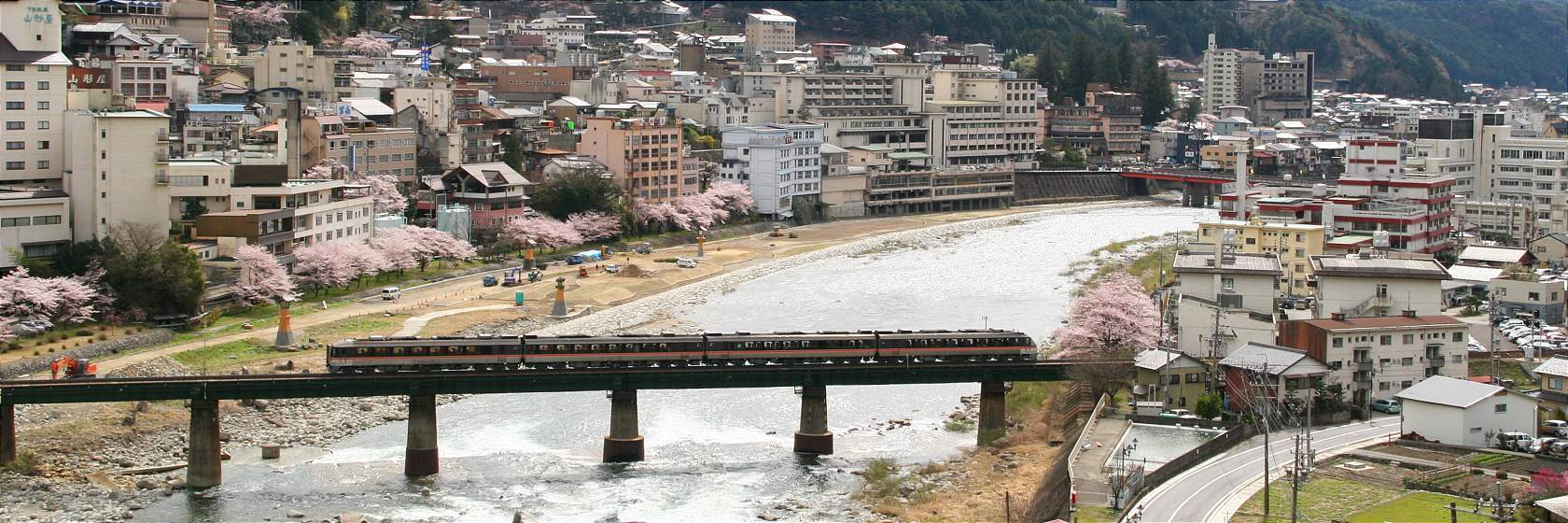In the Edo Period (1603 - 1868), Gero Onsen (下呂温泉) was referred to as one of Japan's three best hot springs by the leading Confucian scholar Hayashi Razan. While the town may now be quite a bit more urbanized than back then, the waters have retained that special quality which has made them so famous.
Gero is located between Nagoya and Takayama, about an hour south of Takayama. This makes it a convenient stopover, or an attractive alternative to stay during the Takayama Festival, when lodging is difficult to find in Takayama.

Onsen are what make Gero famous. There are three public bath houses available in town in addition to the many baths located in the numerous ryokan, several of which are open to the public during certain times of the day for a fee.

A good way to sample some of these baths is to purchase a Yumeguri Tegata (spa pass), a wooden tablet that can be bought all around Gero including the tourist office, ryokan, souvenir shops and convenience stores. It gets you three visits to the baths of any of over a dozen participating ryokan, costs 1300 yen and is good for six months. It also makes a nice souvenir.
Also dotted around the town are many free footbaths where one can sit and relax after a hard day of sightseeing. Among the footbaths is the riverside Funsenike pool which used to be a pool for bathing but was converted into a footbath because its well exposed location caused a constant stream of complaints and troubles.

Onsenji Temple worships Yakushi Nyorai, the Buddha of healing, whose image is credited to restoring the flow of hot spring water to the town after it was stopped up by a large earthquake. Climb the stone staircase to the temple gate to get a view of the city and river.
Located just above town is the Gassho Village (Gero Onsen Gassho Mura), an open air museum of gasshozukuri farmhouses, traditional steep roofed houses from the Shirakawago region. Here you can view the houses, see performances or participate in traditional folk art. Also inside the Gassho Village complex is a komainu (shrine guard dog statue) museum.

Getting there and around
By train from Nagoya or Takayama
The one way journey from Nagoya to Gero takes about 90 minutes and costs around 4500 yen by JR Hida limited express. There are departures every 1-2 hours and the trip is fully covered by the Japan Rail Pass. (How to get to Nagoya)
From Takayama, you can reach Gero by limited express (45 minutes, about 2000 yen, departures every 1-2 hours) or local train (1 hour, 990 yen, departures every 1-2 hours). (How to get to Takayama)
By bus from Takayama
Local buses connect Takayama with Gero Onsen every 1-2 hours. The one way trip takes about 90 minutes and costs 1060 yen.
By shuttle bus from Nagoya for overnight guests
Gero Onsen operates a daily shuttle bus for visitors staying overnight at Gero Onsen between Nagoya Station and Gero Station. The trip takes 2.5 hours and costs 3300 yen one way. A round trip ticket is available for 4500 yen. Advance reservations are mandatory.
Hours and Fees
Gassho Village Open Air Museum
Hours
Shorter hours over New Year
Closed
Admission
Questions? Ask in our forum.
Links and Resources
Hotels around Gero Onsen
-
-
![]() MutsumikanA reasonable ryokan in Gero Onsen, 45min to Takayama. Ideal location for touring Hida. 2min walk from JR Gero Station. Savor Hida Beef & Hooba Miso specialties.View siteSponsored
MutsumikanA reasonable ryokan in Gero Onsen, 45min to Takayama. Ideal location for touring Hida. 2min walk from JR Gero Station. Savor Hida Beef & Hooba Miso specialties.View siteSponsored
-





